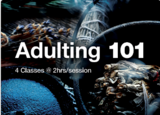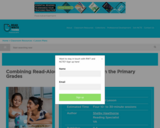
Use an ATM to check account balances and withdraw money.
- Subject:
- Career & Work Exploration
- Practical & Applied Arts
- Material Type:
- Activity/Lab
- Lesson
- Provider:
- Goodwill Community Foundation, Inc.
- Provider Set:
- GCFLearnFree
- Date Added:
- 05/10/2018

Use an ATM to check account balances and withdraw money.

Accounting covers accounting principles and practices, the complete accounting cycle and creation of financial reports. Use of the general journal and special journals, general ledger, accounts payable, accounts receivable and proper financial reporting.This course provides instruction in the basic accounting procedures used to operate a business including sole proprietorship, partnerships, and corporations. The accounting procedures presented will also serve as a sound background for employment in office jobs and preparation for further education and training. The complete accounting cycle is covered, students learn how to us generally accepted accounting principles to prepare, analyze, verify financial transactions, reports and economic information to make decisions for organizations.The course trains students in the basics of manual and computerized accounting. Students learn accounting topics including ethics, accounting principles, computing accounting, accounting terminology, job specific accounting, and clerical duties related to accounting. Students also gain real-world applications in income tax, personal finance, and stock market.

Often, we are not informed in school on how to navigate the world in regards to things like finances, accessing health care, dating, relationships, balancing work and play, partying and staying safe, managing day-to-day stress, and entering into the workforce. This course will provide an opportunity for students to discuss these topics with each other and the facilitator. Together, we will learn how to navigate the tricky and often overwhelming world of adulthood.
This course examines:
• Life Skill development for adulthood
• Basic understanding of personal finance
• Basic understanding of healthy relationship development
• Entering the workforce
• Enjoying recreational time safely
• Stress management
Session 1 – What Does Adulting Mean?
Session 2 – Money
Session 3 – Healthy Relationships
Session 4 – Taking Care of Yourself
*Sessions are offered live at set times. Visit the link to see the schedule.
This course is provided by H.O.P.E (Helping Others thru Peer Education)

Students use their emerging writing skills to write shopping lists. They work within a budget, use problem-solving skills to create lists, and buy their favorite treats at the class store.

Give a customer the correct amount of cash back in all "big bills."

Students learn that what you read in books can really add up when they analyze literary texts for economic concepts.

Fill out forms to deposit cash and a check.

Students make sense of dollars and cents when they study the importance of saving and budgeting in this lesson.

Tnis 4-minute video lesson provides an overview of what the Alternative Minimum Tax is and its purpose. [Core Finance playlist: Lesson 149 of 184]

This 3-minute video lesson looks at how annual Interest varyies with debt maturity. [Core Finance playlist: Lesson 135 of 184]

This 8-minute video lesson provides thinking about how hedge funds are different from other institutions. [Core Finance playlist: Lesson 132 of 184]

This 4-minute video lesson looks at the relationship between balance sheets and income statements. [Core Finance playlist: Lesson 108 of 184]

This 4-minute video lesson looks at using a cash flow statement to reconcile net income with change in cash. [Core Finance playlist: Lesson109 of 184]

This 4-minute video provides the understanding that a marginal tax rate does not apply to all of income. [Core Finance playlist: Lesson 180 of 184]

This 9-minute video lesson explains the difference between a bond and a stock. [Core Finance playlist: Lesson 18 of 184]

This 5-minute video lesson compares closed-end and open-ended mutual funds. [Core Finance playlist: Lesson 128 of 184]

This 4-minute video lesson provides a review of the difference uses of the words contango, backwardation, contango theory and theory of normal backwardation. [Core Finance playlist: Lesson 100 of 184]

This 4-minute video lesson discusses what a trader means when they say that a market is in contango[Core Finance playlist: Lesson 94 of 184]

This 5-minute video lesson provides understanding of how most corporate debt is different than most personal mortgages. [Core Finance playlist: Lesson 148 of 184]

This 4-minute video lesson explains why depreciating the truck spreads out the expense. [Core Finance playlist: Lesson 112 of 184]